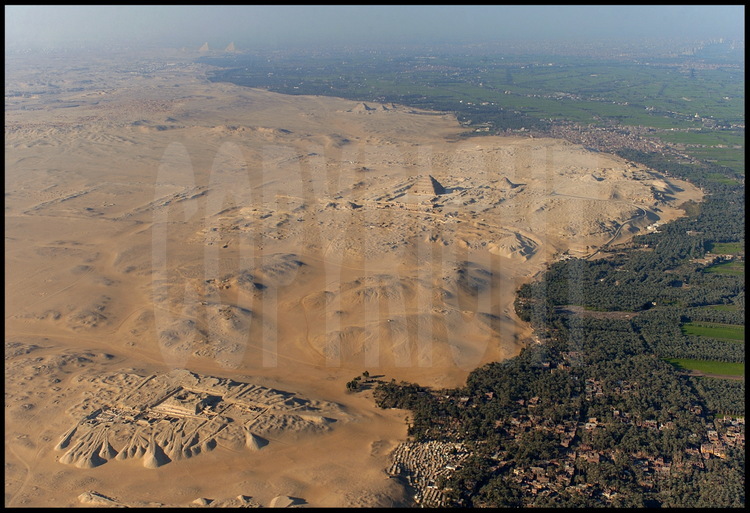|
|
|
|

|
|
© Stéphane Compoint
|
|
West of the fertile “green belt” of the Nile River Valley is the plateau of Saqqara, now a desert with mere vestiges of a more glorious past. In the north, (left in the background) is the plateau of Gizeh with the three famous pyramids of the IVth dynasty: Kheops, Khephren and Mykerinos, and the three small pyramids of Abu Sir. In the center, at the Saqqara site, the famous Step Pyramid of Djoser, dated to the IIIrd dynasty and humanity’s oldest stone monument. Just right, the pyramid of Teti, Userkare’s predecessor. To the South, in the foreground, the funerary complex of Pepi I, excavated by French archeologists J. Leclant and A. Labrousse. Between the sites of Djoser and Pepi I is the site of Tabbet al-Guesh where archeologist Vassil Dobrev and his team are searching for clues to the lost pharaoh, Userkare. Despite the apparent incomprehensible vastness of such a space, researchers are increasing their understanding of the layout of these colossal necropoli, which were built following strict axial guidelines.
|
|
|
|
|

